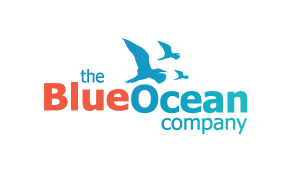“Our corporate HR department wants to define a company-wide framework for career path development, taking into account the different needs and objectives across all divisions – and at the same time, set standards and align approaches. So far, only isolated attempts at development are made. Our divisions are autonomous in deciding which development they need at a local level, and initiatives are therefore not integrated or aligned.”
– Head of HR and Leadership Initiatives, Aerospace and Defense Industry
Focus first on getting the right sponsors on board
This is a very big and ambitious, but very important, task that you have set out to accomplish. In order to increase your chances for success — and if you haven’t done so already – make sure that you have visible and active support from top management and the heads of the divisions so that this initiative is not seen as ‘yet another HR project’.
Find both Allies and Opponents
As part of your data-gathering process, you will most likely come across some resistance to one company-wide framework, especially because of the historical autonomy of the divisions. What could drive your initiative forward (driving forces)? What could be the restraining forces? Whatever they are, focus on removing just one force at a time.
A very practical way to go about this is to create a stakeholder map for yourself: identify the different stakeholders you need to influence and how you would approach each of them.
We suggest that you focus on your Allies as well as your Opponents. Discuss your framework with the divisions where you already have a good reputation and trusted relationships (Allies). Ask these Allies for a) advice, b) introductions to other supportive people/divisions and c) if they would be willing to influence indirectly on your behalf. Remember, you don’t need to personally influence everyone.
Always start where there is least resistance in order to build momentum. If you can generate visible support early on in your campaign, then those who are unsure (Fence Sitters) can often be persuaded by sheer weight of numbers.
Also talk with Allies with whom you have a good relationship but who do not support what you want (Friendly Opponents). Uncover what the resistance to your proposal might be and use this insight to rehearse your counter arguments for the debates ahead. One more thing to remember: keep Allies up to date with your progress. It will be vital not just to get them on your side, but also to keep them there. Regular contact is the glue that makes your ‘influencing campaign’ work.
Provide Employees with Effective Career Strategies
Your company faces a very common challenge in how to manage a career in the 21st century. With the pace of accelerated change, uncertainty, and volatility, it is not surprising that one particular leadership competency –which entered the mainstream at the very end of the 20th century — is indeed ‘managing your career’. As the Center for Creative Leadership puts it: “The career of the 21st century… will be driven by the person, not the organization and will be re-invented by the person from time to time as the environment and the person change.”
Based on our experience with other clients, we have noticed that employees often are confused about their role as individuals in career development. Many employees neither have a clear nor realistic idea of what they want, what is possible, and no idea about how to go about it.
One way to change this situation is to offer employees tools to take more responsibility for influencing their career. Five career strategies we tend to include in our career management programmes include: knowing your strengths and weaknesses, managing your reputation by asking for regular feedback, understanding your organization and industry, exploring possibilities for furthering your career, and creating a personalised action plan.
Keep it Simple
We love to “think big”, but in this case we recommend “think simple”. Classification, job-families, talent management – there seem to be a lot of different aspects in rolling this out. The most important thing is to keep the structure simple. You will never, ever be able to cover all aspects of every career opportunity. Simplicity is the key to widespread acceptance.
